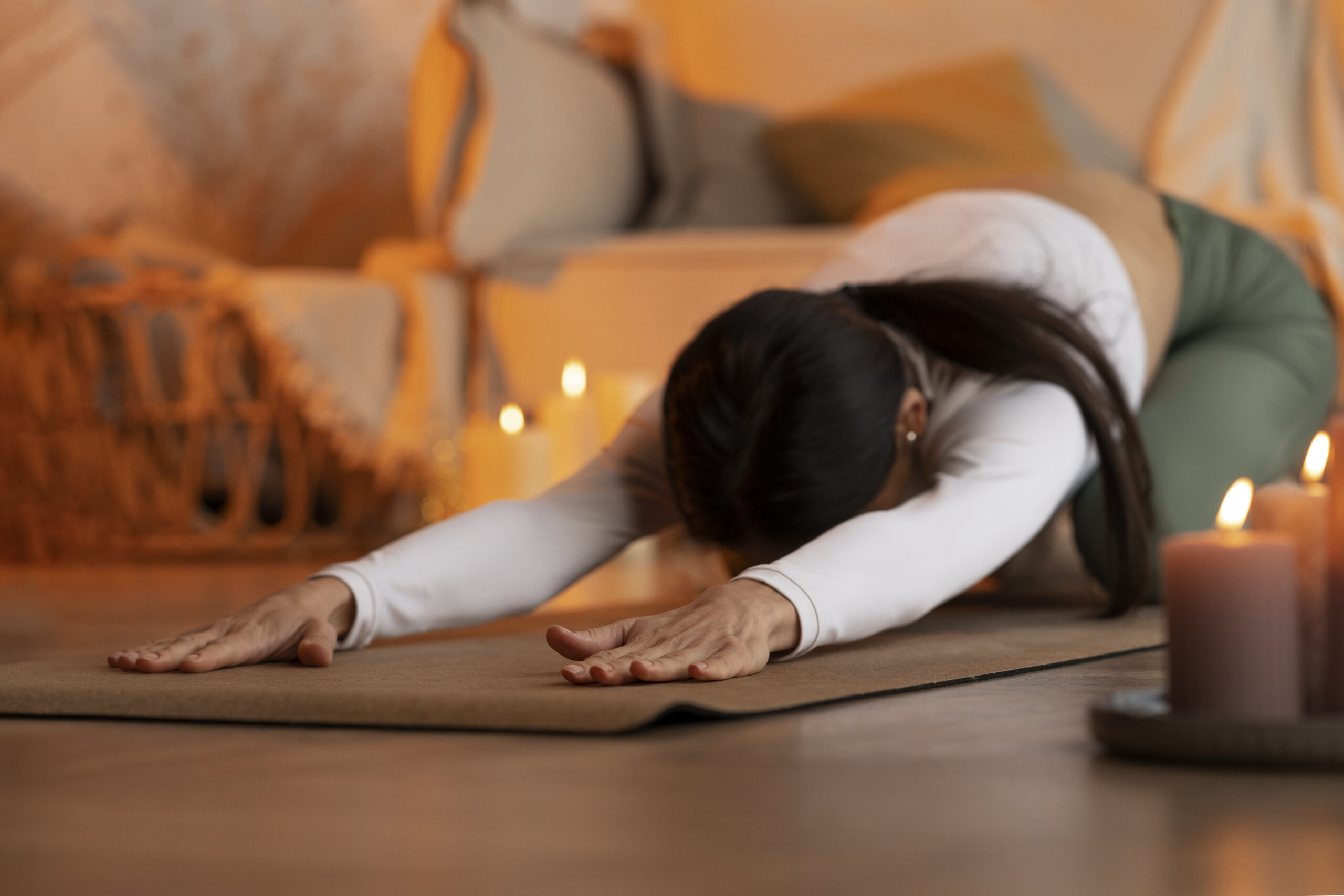Anxiety goes beyond the result of nerves leading up to an event. It’s a normal response that the brain employs to recognize and anticipate dangers. But when it feels constantly intense, constant, or overwhelming, it can cause problems with the daily routine. This guide for beginners explains the causes of anxiety and how it manifests both in the mind and body, and how you can deal with it. As you go through the guide, you’ll discover practical advice, easy examples, as well as simple steps to help you feel confident and at ease.

Understanding Anxiety: A Simple Definition
For starters, let’s define anxiety in plain English. Anxiety can be described as a combination of emotions, thoughts, and physical reactions that are linked to uncertainty and anticipation. For example, your heart could be racing before an interview, or you might be anxious about a test coming up, and you may be anxious in a crowd. These feelings are an integral part of your alarm system. But if your alarm is constantly ringing with no indication of any reason at all, or rings in such a way that it disturbs sleep or your work-life relationships, it could be a sign of an anxiety disorder. Anxiety disorders are widespread and treatable. Many sufferers can improve their condition with the right assistance.
How Anxiety Affects Your Body and Mind
The next step is to know how anxiety impacts the body. When you are in a state of fear, the nervous system releases stress hormones such as cortisol and adrenaline. In turn, your heart rate rises and your muscles tighten, and your breathing speed increases. The “fight, flight, or freeze” response generates brief bursts of energy. However, if the response is left on, you could experience stomach issues, headaches, dizziness, sweating, the sensation of twitching, or tightness in your chest. Additionally, some individuals notice numbness, tingling, or other sensations, which is a bit frightening but is usually an indication of a fast breathing rate, not something more serious.

In addition, anxiety can influence your thoughts. You may imagine scenarios that could be catastrophic and struggle to focus or rethink your choices. Catastrophic thinking, such as “If I make one error and everything falls apart,” can increase anxiety.
In the end, you may begin avoiding situations that can trigger anxiety. Avoidance can bring relief in the short term, but it can also fuel anxiety in the long run since your brain does not receive evidence that you can handle the situation. Thus, recognizing these thinking patterns is the first step towards transformation.
Common Types of Anxiety
While anxiety can manifest in various ways, some types are typical. GAD, also known as Generalized Anxiety Disorder (GAD), is a constant anxiety over a range of areas of your life, such as health, money, safety, or performance. Social anxiety is characterized by anxiety about judgment in social settings. Panic disorder can be described as sudden flashes of fear that are intense, usually with chest pain, choking sensations, or the anxiety of being out of control.

Furthermore, phobias can cause an intense fear of certain things, like heights or flying. Although only a doctor can diagnose how you’ve experienced them, observing your experiences in these patterns could aid in seeking the appropriate assistance.
What Causes Anxiety?
What causes anxiety? Most often, it’s a combination of brain chemistry, genetics, as well as life experiences and routines. For instance, growing up in a stressful environment can alter your system of detecting threats. Also, medical conditions and caffeine or other medications can increase anxiety symptoms.

Constant uncertainty about financial matters, work, or relationships can keep the anxiety in the air. The lesson to take away is that anxiety is real, multifaceted, and is not your fault.
Effective Ways to Manage Anxiety
We’ll now shift to managing. The first step is breathing exercises. They are an easy way to relax your nervous system. Try breathing through your nostrils for four times and hold it for four minutes, and then breathe slowly out for 6 to 8 counts. Because exhaling for long periods activates your body’s calming mechanism, this can calm your racing thoughts. Use it in conjunction with a grounding practice to name five things that you see. Four that you can touch, three that you have heard, three that you can smell, and one that you can taste. Thus, your attention is drawn to the present and not worrying about the future.
Build Healthy Routines
Second, create a consistent routine. Sleep is an important pillar. Try to maintain the same time for bed and wake, and avoid late-night caffeine and screens that are dim at least an hour before going to bed. Also, regular exercise, walking, or stretching, or even resistance training can help to reduce stress hormones and boost mood. Even ten minutes counts. Nutrition is equally important. A balanced diet that includes fiber, protein, and healthy fats can help stabilize blood sugar levels. This helps to maintain energy levels and lessens the jittery feeling.
Challenge Anxious Thoughts
Third, question anxious thoughts with a gentle curiosity. Find out: What is the evidence in support of and against this fear? What advice would I give someone else who is in the same position? Do you have an action I could take this morning? For example, if you are afraid of social situations and avoid an event, you can begin by going for 15 minutes, and then plan an easy way to leave. Every small victory trains your brain to anticipate security, not risk.

Face Your Fears Gradually
Furthermore, exposure in manageable steps can weaken fear. If you are afraid of public speaking. You could start by preparing in a room that is empty and recording yourself, present to one person before presenting to a smaller group. Since you’re working in stages, your nervous system can learn without getting overwhelmed. With time, the alarm goes off.
Consider Professional Support
You may also think about more structured treatments. Cognitive Behavioral Therapy (CBT) can help you identify harmful thinking patterns and then examine them using actions. Furthermore, Acceptance and Commitment Therapy (ACT) aids you in making the space for discomfort while you shift towards your ideals.

For anxiety that is triggered by trauma, treatments like EMDR may be effective. If the symptoms are extreme or persistent, speak to an authorized professional. They can create a customized plan that may consist of medication, therapy, or both. If used with guidance, medication such as SSRIs can help reduce symptoms, making it simpler to employ coping techniques.
The Importance of Social Support
Social support is also important. Discuss your experiences with a trusted friend who is patient and doesn’t try to solve everything. Since shame is an aversion to silence, speaking out often can lessen the burden. If you’re lacking local help, online groups and mental health organizations can provide support and suggestions. But make sure you choose groups that are controlled and based on research.

Quick Checklist for Managing High Anxiety Days
On days that anxiety levels are high, you can create a quick list of things to do. For instance:
- Drink water and have a nutrient-rich snack.
- Take a walk outside or gaze out through a window to reset your senses.
- Do 2 minutes of breathing slowly.
- Make a small goal with clearly defined deadlines, such as sending an email.
These tiny actions help increase the momentum. In addition, make use of “when-then” plans: When I feel that my chest is becoming tight, I’ll stop, put my hand on my stomach, and then exhale slowly for 8 counts. Automating your response can reduce decision fatigue at times you need it the most.
Track Your Progress and Celebrate Wins
When practicing, keep track of what you can do to improve. Simple notes on your phone, sleep hours and caffeine intake, movements, and mood can reveal patterns. Perhaps you feel anxious at lunchtime or when you browse late in the evening. Based on this knowledge, you can alter your routine, not blame yourself. The pace of progress is rarely unidirectional. So, celebrate little gains like a peaceful start to the day, or a gathering you took part in, or thought you were reframing.

You’re Not Alone
Last but not least, remember that anxiety is normal, understandable, and manageable. There is no reason to be broken, and you’re not isolated. With the help of reliable tools, caring people, and occasionally professional help, you can alleviate symptoms and make room to focus on the things you love. If you’re not sure where to begin, start by breathing, taking a walk for a few minutes, and having an honest discussion. If you require more assistance, talk to an expert who will guide you further. Each step by step, the alarm becomes more peaceful, and your life becomes larger.



